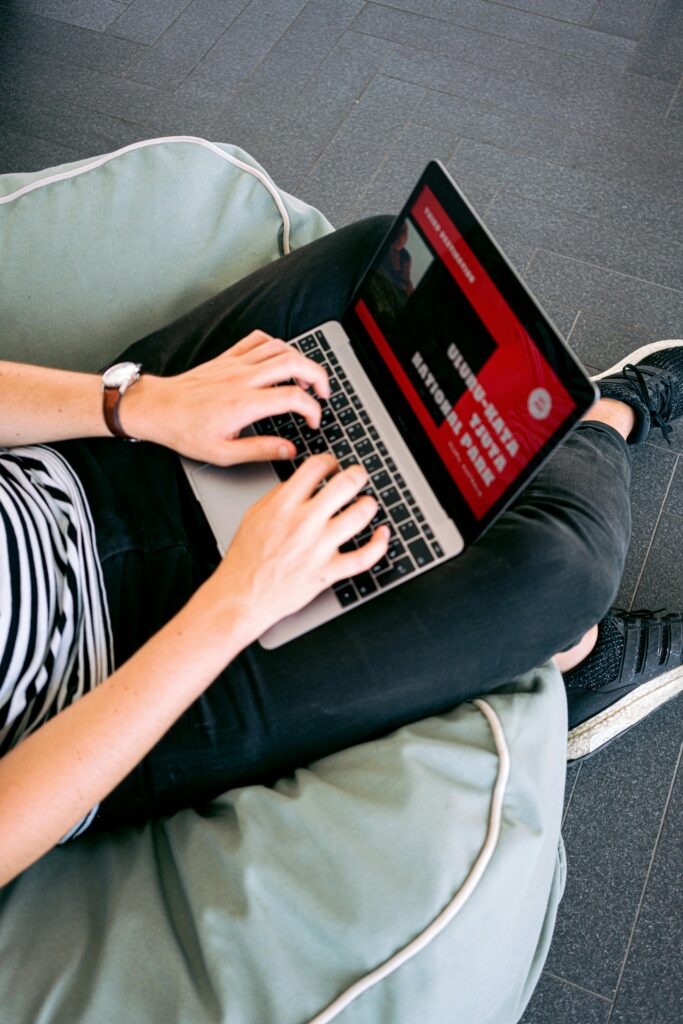A well-designed website is more than just an aesthetic choice; it’s an essential part of a business’s success online. With technology and design preferences constantly evolving, staying up-to-date with the latest web design trends is key to maintaining a competitive edge. In this post, we’ll explore the top web design trends that are reshaping the digital landscape, focusing on enhancing user experience and engagement.
1. Dark Mode Design
Dark mode has gained significant popularity and continues to be a preferred design style. This feature reduces eye strain, especially in low-light environments, and gives websites a sleek, modern look. Many users prefer dark mode, which is why incorporating it as an option for your visitors can improve user experience.
Pro Tip: Consider offering users the choice between dark mode and light mode, allowing them to select their preferred viewing option.
2. Minimalism and Clean Layouts
Less is more — and this philosophy dominates web design. Minimalistic designs with clean, simple layouts make websites easier to navigate, reduce distractions, and help users focus on key content. Streamlined designs with ample white space contribute to a more enjoyable browsing experience.
Pro Tip: Focus on essential elements and prioritize content to create a clean and organized design. Avoid clutter and allow your content to breathe.
3. Interactive and Immersive Experiences
Incorporating interactive elements like animations, micro-interactions, and dynamic scrolling can make your website feel more engaging and personalized. Whether it’s a subtle hover effect or an animated background, these elements create a more immersive experience and keep visitors engaged.
Pro Tip: Use interactive elements sparingly. Overuse can overwhelm the user. The goal is to enhance the experience, not distract from the core message.
4. Mobile-First Design
With mobile usage continuing to increase, designing websites with a mobile-first approach is more important than ever. Google has adopted mobile-first indexing, meaning websites optimized for mobile are more likely to rank higher in search results. Mobile-first design focuses on providing a smooth, seamless user experience across all devices.
Pro Tip: Test your website on various mobile devices to ensure it looks and functions perfectly. Prioritize fast loading speeds and responsive layouts to improve user experience.
5. Bold Typography
In web design, typography is taking center stage. Bold, large fonts and creative typefaces can convey personality and make your website stand out. Typography isn’t just about readability; it’s a powerful design tool that sets the tone of your brand and enhances the visual appeal of your site.
Pro Tip: Choose fonts that align with your brand identity and ensure they are legible across all devices and screen sizes. Use bold typography to highlight key messages or calls to action.
6. 3D and Augmented Reality (AR) Integration
3D design and AR are revolutionizing the way websites engage users. By integrating interactive 3D models or AR features, businesses can offer users a more immersive and interactive browsing experience. Whether it’s a product preview, virtual try-on, or 3D illustration, these features can take user engagement to the next level.
Pro Tip: Implement 3D or AR elements in moderation to avoid slowing down your website’s loading speed. Focus on features that add value to the user experience, like allowing customers to visualize products.
7. AI-Powered Chatbots and Personalization
AI and machine learning are becoming integral parts of web design. Chatbots powered by AI can assist visitors in real-time, offering personalized help and improving customer service. Additionally, AI can be used to personalize the website’s content based on the user’s behavior, location, or preferences, creating a more tailored experience.
Pro Tip: Implement a chatbot that offers valuable, context-aware responses and provides a seamless transition between automated support and human assistance when needed.
8. Voice Search Optimization
As voice search becomes increasingly common, optimizing your website for voice-based queries is essential. This involves adapting your content and design to support conversational queries and ensuring that your website is easily navigable via voice commands. Websites optimized for voice search have a better chance of ranking well on platforms like Google Assistant and Siri.
Pro Tip: Focus on natural language and long-tail keywords in your content. Make sure your website’s navigation is intuitive and can be easily accessed using voice commands.
9. Sustainability and Eco-Friendly Design
Sustainability is becoming an important value in web design. Many users prefer businesses that take eco-friendly steps, such as using sustainable hosting, minimizing energy consumption, and reducing the carbon footprint of their website. Green web design focuses on reducing the environmental impact of your digital presence.
Pro Tip: Consider choosing an eco-friendly hosting provider, reducing image sizes to improve site performance, and using a minimalistic design to cut down on energy usage.
10. Accessible Design
Accessibility is a critical consideration for web designers. Creating an inclusive web experience means making sure your website is usable for all visitors, including those with disabilities. Implementing accessible design principles, such as alternative text for images, keyboard navigability, and high-contrast color schemes, ensures that everyone can interact with your content.
Pro Tip: Use accessibility tools and resources like the Web Content Accessibility Guidelines (WCAG) to ensure your website meets the standards for accessibility and is easy to use for people with disabilities.
Conclusion
Web design is all about creating seamless, engaging, and personalized experiences for users. From bold typography to mobile-first design, interactive elements, and accessibility, staying on top of these trends will ensure that your website remains relevant, functional, and appealing to visitors.
If you’re ready to design or revamp your website to keep up with the latest trends and enhance user experience, our team is here to help! Contact us today to get started.

